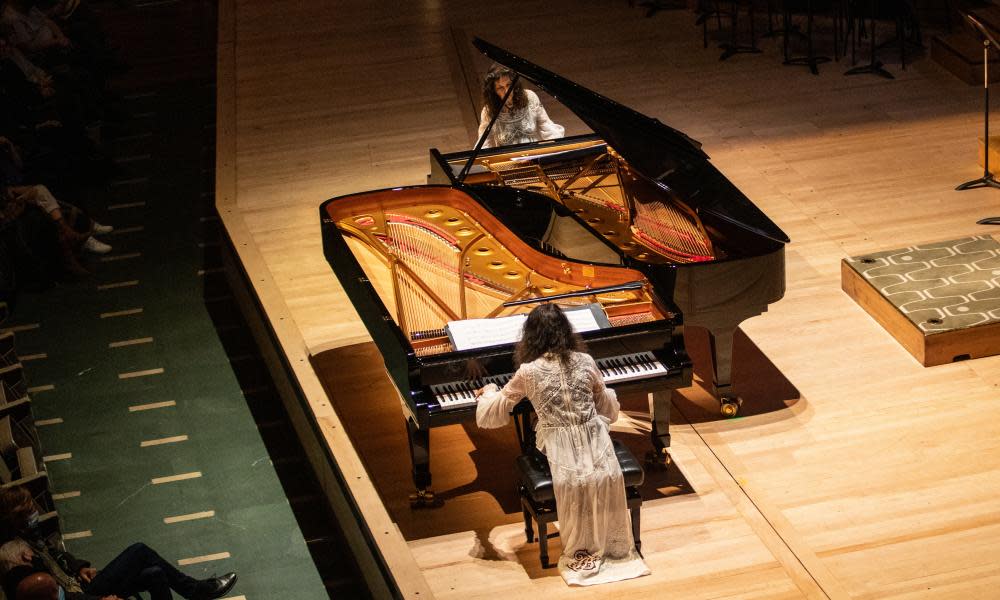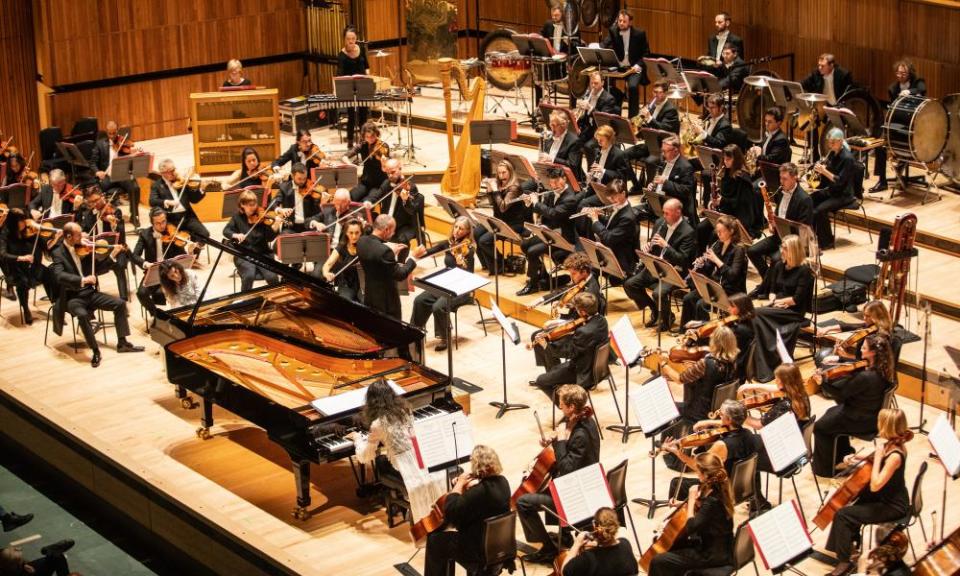Philharmonia/Labèque Sisters review – intensive immersion in Philip Glass

If the repeated melodic licks and ultra-static harmonies of Philip Glass’s minimalism aren’t your thing, look away now. Replacing a live-accompanied screening of Koyaanisqatsi (the non-narrative film built around Glass’s score) after the Philip Glass Ensemble pulled out due to the pandemic, this programme remained an intensive plunge into the composer’s musical language.

In three works drawn from the past 40 years, the continuities were unmissable: single chords sustained or hammered out or looped as arpeggios; sudden, thrilling changes of volume or orchestration; rhythmic drive supercharged by the occasional “missing” beat. Now standard features of film soundtracks, such gestures have lost their power to shock. Yet Glass’s music can still be intoxicating, even mesmerising, in live performance – which is presumably why this concert was listed as sold out.
Conducted by Lawrence Renes, the Philharmonia took time to settle into the prelude to Glass’s opera Akhnaten. Its relentless broken chords can sound mystical and strange emanating from an orchestra pit. On stage, it’s harder to ignore how exhausting such figuration is to sustain – and how difficult it is to generate Glass’s apparently seamless textures.
Pianists fare better, since those arpeggiations are unequivocally idiomatic on a keyboard. The Double Concerto for Two Pianos and Orchestra was championed by its dedicatees Katia and Marielle Labèque, whose unaccompanied passages offered some precious lucidity amid the heavyweight jauntiness. The standout item, though, was the UK premiere of a new arrangement for two pianos of Glass’s “dance opera” Les Enfants Terribles. What was lost in variety with the absence of singers was regained in the Labèque sisters’ remarkable playing: their velveteen touch interrupted periodically by harsh attacks, their exchange of patterns, sounds and colours almost liquid.
In such a context, the blaring opening of John Adams’s Doctor Atomic Symphony – a sort of vast orchestral klaxon – came as a relief, like a TV suddenly switched from black and white to colour. But the expansion of expressive possibilities came too late: marked by the orchestra’s earlier exertions, the performance lacked the subtlety and care demanded by Adams’ kaleidoscopic score.

 Yahoo News
Yahoo News 
